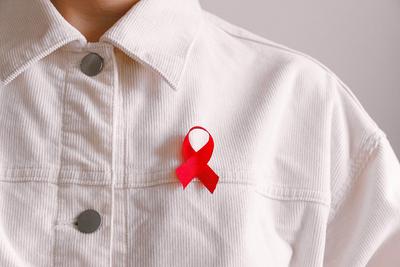
“I’m not afraid to say I cried,” said Kathryn Stephenson, a researcher at Beth Israel Deaconess Medical Center in Boston. She said this after learning that an experimental HIV vaccine she had researched for years failed to protect young women in sub-Saharan Africa from infection. This is not rare, as every experimental HIV vaccine has so far failed. However, the novel technology that has helped the coronavirus vaccines become a reality and allowed them to be used globally at record speeds opens up new options for vaccine research that can help in the pursuit of an elusive HIV vaccine. Unlike traditional vaccines that take years or longer, Messenger RNA vaccines can be created and tested in mere months (Johnson, 2022).
Of course, speed alone will not solve the HIV problem, but it will help scientists skew their research quicker and find solutions that work. That ability to change solutions and disregard duds swiftly is crucial, since it is increasingly likely that an HIV vaccine will likely not be a shot but a series of shots. Each one of these shorts will be specifically manufactured to nudge the immune system towards more immunity against HIV. These technicalities signaled that an HIV vaccine may be a far-fetched dream, but the COVID vaccine developments have proved that an HIV vaccine no longer has to be considered a dream. “Even as recently as five years ago, there were a lot of people who would say this is a beautiful scientific idea but ridiculous to imagine in real life,” said Stephenson, discussing the idea of mRNA vaccines. “I was one of those people. The world has changed” (Johnson, 2022).
Although researchers have been working for years on a HIV vaccine that can make the human immune system release protective, highly specialized antibodies that fight viruses and are capable of blocking a number of different versions of the virus. These broadly neutralizing antibodies, or bNAbs for short, are important to fight viruses, but they are hard to generate. Because of that difficulty, vaccination efforts have mostly focused on immune responses that involve T cells and other types of antibodies. The majority of scientists working on a HIV vaccine agree that a protective vaccine will need to involve bNAbs. However, to be able to do that, vaccine researchers need to solve some of the problems plaguing vaccinology for years (Johnson, 2022).

Now, across clinics in the United States, small human tests are being conducted using a new HIV vaccine technology that is inspired by the same technology that brought us the coronavirus vaccines in under a year. Even though no one expects such success with HIV, as it is a way harder enemy than COVID, it still is a promising technology. Coronavirus variants emerging all over the world pose a risk to vaccines, but it is nothing when compared to the challenges posed by HIV variants. In fact, a HIV patient is often infected with multiple HIV variants, called a swarm of viruses. The virus is also shielded by sugars that hide its vulnerable spots. Also, although the human immune system is often able to beat the virus causing COVID, this is almost never the case for HIV. “HIV is the premier virus. It’s got more tricks on board than essentially any other virus,” said Dennis Burton, the chair of the department of immunology and microbiology at Scripps Research Institute (Johnson, 2022).
Vaccines generally work by presenting something similar to the virus into the body. In the case of the coronavirus, this turned out to be fairly simple. The vaccines produced were able to show the immune system the spikes formed on the surface of coronaviruses and enable the body to create virus-blocking antibodies. This is not the case with HIV, since the virus mutates rapidly and vaccines presenting something similar to the virus would become obsolete quickly as HIV continues mutating. HIV also has an impressive ability to deceive, distract and hide from the body’s immune system. This fools the immune system into focusing its powers on decoys. Another challenge in the case of HIV is that we cannot simply prevent severe infections or hospitalizations. For an HIV vaccine to work, it must block the infection completely due to the virus’s ability to integrate into the body’s cells. “It's a tall order for a vaccine,” said Dan Barouch, a vaccine expert working at Beth Israel Deaconess and a researcher working on the hIV vaccine that failed last summer. “It will have to act very fast, and either block infection- which may or may not be possible- or eliminate it exceedingly quickly, before it is able to seed a reservoir” (Johnson, 2022).
In 2006, WFCF provided funds to Baylor International Pediatric AIDS Initiative (BIPAI) at the University Baylor Medical Center in Texas. The funding was used to support two facilities, Lesotho Care and Treatment Center & Swaziland Care and Treatment Center. The funds were specifically used for the care and medical treatment of orphaned children with AIDS. Read more about this project!
Experiments in the next ten years will undoubtedly change the landscape for research looking for HIV vaccines. Only time will tell whether we will finally be able to solve a decades-old mystery and save the lives of many.
References:
Johnson, C. Y. (2022, June 2). There's still no HIV vaccine. the science behind coronavirus shots may help. The Washington Post. Retrieved June 21, 2022, from https://www.washingtonpost.com/health/2022/06/01/hiv-vaccine-covid-vaccine/
|



